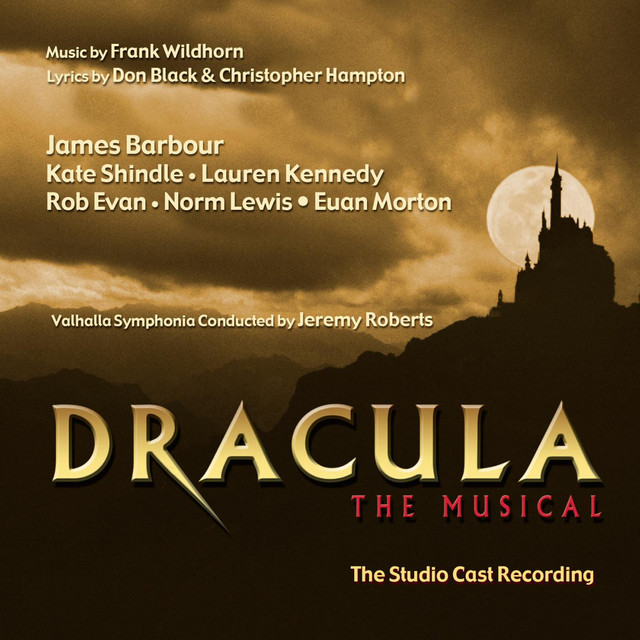
Brown Eyed Girl
by Van Morrison

" Brown Eyed Girl " is a song by Northern Irish singer and songwriter Van Morrison. Written by Morrison and recorded in March 1967 for Bang Records owner and producer Bert Berns, it was released as a single in June of the same year on the Bang label, peaking at No. 10 on the Billboard Hot 100. The song spent a total of sixteen weeks on the chart. It featured the Sweet Inspirations singing back-up vocals and is considered to be Van Morrison's signature song. "Brown Eyed Girl" has remained a staple on classic rock radio, and has been covered by hundreds of bands over the decades.
[video width="640" height="360" mp4="https://www.easypianoonline.com/wp-content/uploads/2020/11/BrownEyedGirl.mp4"]
Lyrics
Hey, where did we go?
Days when the rains came
Down in the hollow
Playin' a new game
Laughing and a running hey, hey
Skipping and a jumping
In the misty morning fog with
Our hearts a thumpin' and you
My brown-eyed girl
You, my brown-eyed girl
Whatever happened
To Tuesday and so slow?
Going down the old mine
With a transistor radio
Standing in the sunlight laughing
Hiding behind a rainbow's wall
Slipping and sliding
All along the waterfall, with you
My brown-eyed girl
You, my brown-eyed girl
Do you remember when we used to sing
Sha la la la la la la la la la la te da
Just like that
Sha la la la la la la la la la la te da, la te da
So hard to find my way
Now that I'm all on my own
I saw you just the other day
My, how you have grown
Cast my memory back there, Lord
Sometimes I'm overcome thinking 'bout
Making love in the green grass
Behind the stadium with you
My brown-eyed girl
You, my brown-eyed girl
Do you remember when we used to sing
Sha la la la la la la la la la la te da
Sha la la la la la la la la la la te da, la te da
(Bit by bit, by bit, by bit, by bit, by bit)
(Sha la la la la la la, la te da, la te da
Sha la la la la la la la la la la te da, la te da
(La te da, da da da da da da da da)
Songwriters: Van Morrison

Air On The G String
by Johann Sebastian Bach

" Air On The G String ", also known as "Air for G String" and "Celebrated Air", is August Wilhelmj's 1871 arrangement of the second movement of Johann Sebastian Bach's Orchestral Suite No. 3 in D major, BWV 1068. The arrangement differs from the original in that the part of the first violins is transposed down so that it can be played entirely on a violin's lowest string, i.e., the G string. It is played by a single violin (instead of by the first violins as a group).
Bach's third Orchestral Suite in D major, composed in the first half of the 18th century, has an "Air" as second movement, following its French overture opening movement. The suite is composed for three trumpets, timpani, two oboes, strings (two violin parts and a viola part), and basso continuo. In the second movement of the suite however only the strings and the continuo play. This is the only movement of the suite where all other instruments are silent.
The music of the "Air" is written on four staves, for first and second violins, viola(s), and continuo. The interweaving melody lines of the high strings contrast with the pronounced rhythmic drive in the bass.
[video width="640" height="360" mp4="https://www.easypianoonline.com/wp-content/uploads/2020/11/AirOnTheGString.mp4"]

[xyz-ihs snippet="NavigationLinksBlock-Common"]
Honey Pie
by The Beatles

" Honey Pie " is a song by the English rock band The Beatles, from their 1968 eponymous double album The Beatles (also known as "the White Album"). The song was written entirely by Paul McCartney and credited to the Lennon–McCartney partnership.
The song is a direct homage to the British music hall style. It concerns a famed actress, called only by the term of endearment "Honey Pie", who becomes famous in the United States, and her old lover, who wishes for her to rejoin him in England. The premise – a humble admirer yearning for the return of his lover – is not unlike a typical music hall plot. In order to establish an appropriate, old-timey sound, 'crackles' were added to the third line, "Now she's hit the big time!", from a 78-rpm record.
[video width="640" height="360" mp4="https://www.easypianoonline.com/wp-content/uploads/2020/11/HoneyPie.mp4"]
Lyrics
She was a working girl
North of England way
Now she's hit the big time
In the U.S.A.
And if she could only hear me
This is what I'd say.
Honey pie, you are making me crazy
I'm in love but I'm lazy
So won't you please come home.
Oh honey pie, my position is tragic
Come and show me the magic
Of your Hollywood song.
You became a legend of the silver screen
And now the thought of meeting you
Makes me weak in the knee.
Oh honey pie, you are driving me frantic
Sail across the Atlantic
To be where you belong.
Will the wind that blew her boat
Across the sea
Kindly send her sailing back to me.
Honey pie, you are making me crazy
I'm in love but I'm lazy
So won't you please come home.
Songwriters: John Lennon / Paul Mccartney

Please Don't Make Me Love You
by Frank Wildhorn
<
" Please Don’t Make Me Love You " is a song from Dracula, the Musical. Dracula, the Musical is based on the original 1897 Victorian novel by Bram Stoker. The score is by Frank Wildhorn, with lyrics and book by Don Black and Christopher Hampton.
The show had its regional premiere at the La Jolla Playhouse, La Jolla, California, in 2001, playing to 115% capacity, earning the highest paid capacity for any world premiere production in the playhouse's history. It then premiered on Broadway in 2004, starring Tom Hewitt as the vampire Count and Melissa Errico as the woman he loves, Mina Harker.
[video width="640" height="360" mp4="https://www.easypianoonline.com/wp-content/uploads/2020/11/PleaseDontMakeMeLoveYou.mp4"]
Lyrics
There only so much
That a heart can take
Before it starts to break
Please don't make me love you
Please don't make me need you
I've no room in my life
For something like this
Please don't take my mornings
Please don't steal my summers
I know they will vanish
The moment we kiss
I grow weak when we talk
I'm confused when we touch
I should just walk away
But that's asking too much
Pease don't make me do this
Please don't make me want this
All my drams were taken
Until I met you
Your the one I think of
Soon as I awaken
Funny how the heart tells
The mind what to do
I'm not sure I can go through all
The joy and the pain
Much better now
To let these dreams take flight!
Please don’t make me love you
Please don’t make me need you
Simplify my life
By just setting me free
Promise me you'll do this
Only you can do this
Please don't make me love you
Unless you love me
Songwriters: Don Black / Frank Wildhorn / Christopher Hampton

Nimrod
by Sir Edward Elgar

" Nimrod " is the 9th Variation from Sir Edward Elgar’s Enigma Variations. Elgar described how on the evening of 21 October 1898, after a tiring day's teaching, he sat down at the piano. A melody he played caught the attention of his wife, and he began to improvise variations on it in styles which reflected the character of some of his friends. These improvisations, expanded and orchestrated, became the Enigma Variations.
The name “Nimrod” of the variation refers to Augustus J. Jaeger, who was employed as music editor by the London publisher Novello & Co. He was a close friend of Elgar's, giving him useful advice but also severe criticism, something Elgar greatly appreciated. Elgar later related how Jaeger had encouraged him as an artist and had stimulated him to continue composing despite setbacks. Nimrod is described in the Old Testament as "a mighty hunter before the Lord", Jäger being German for hunter.
[video width="640" height="360" mp4="https://www.easypianoonline.com/wp-content/uploads/2020/11/Nimrod.mp4"]

[xyz-ihs snippet="NavigationLinksBlock-Common"]
The Promise Of The World
(Sekai no Yakusoku)
by Yumi Kimura

" The Promise Of The World " (Sekai no Yakusoku) is a song from the animated film Howl’s Moving Castle. Howl’s Moving Castle is a 2004 Japanese animated fantasy film written and directed by Hayao Miyazaki. The film is loosely based on the 1986 novel of the same name by British author Diana Wynne Jones. The film was produced by Toshio Suzuki, animated by Studio Ghibli and distributed by Toho. The Japanese voice cast featured Chieko Baisho and Takuya Kimura, while the English dub version starred Jean Simmons, Emily Mortimer, Lauren Bacall, Christian Bale, Josh Hutcherson and Billy Crystal.
The story is set in a fictional kingdom where both magic and early 20th-century technology are prevalent, against the backdrop of a war with another kingdom. The film tells the story of a young, content milliner named Sophie who is turned into an old woman by a witch who enters her shop and curses her. She encounters a wizard named Howl and gets caught up in his resistance to fighting for the king.
[video width="640" height="360" mp4="https://www.easypianoonline.com/wp-content/uploads/2020/11/ThePromiseOfTheWorld.mp4"]
Lyrics
The smile that trembles deep behind your tears
Is the promise of the world since the beginning of time
Even if I’m alone now, from our yesterdays
Today is born sparkling
Like the day when we first met
You’re not in my memories
You turn into a breeze and touch my cheeks
Even after our parting in the afternoon with the sun beaming through the trees
The promise of the world won’t ever end
Even if I’m alone now, tomorrow is limitless
You taught me about
The kindness that lurks in the night
You’re not in my memories
So live forever in the song of the streams
In the color of this sky, in the fragrance of flowers
Songwriters: Yumi Kimura
Sekai no Yakusoku (Romaji – Original)
Namida no oku ni yuragu hohoemi wa
Toki no hajime kara no sekai no yakusoku
Ima wa hitori de mo futari no kinou kara
Kyou wa umare kirameku
Hajimete atta hi no you ni
Omoide no uchi ni anata wa inai
Soyokaze to natte hoho ni furete kuru
Komorebi no gogo no wakare no ato mo
Kesshite owaranai sekai no yakusoku
Ima wa hitori de mo ashita wa kagirinai
Anata ga oshiete kureta
Yoru ni hisomu yasashisa
Omoide no uchi ni anata wa inai
Seseragi no uta ni kono sora no iro ni
Hana no kaori ni itsu made mo ikite
Songwriters: Yumi Kimura

[xyz-ihs snippet="NavigationLinksBlock-Common"]
Merry-Go-Round Of Life
by Joe Hisaishi

" Merry-Go-Round Of Life " is a theme track from the animated film Howl’s Moving Castle. Howl’s Moving Castle is a 2004 Japanese animated fantasy film written and directed by Hayao Miyazaki. The film is loosely based on the 1986 novel of the same name by British author Diana Wynne Jones. The film was produced by Toshio Suzuki, animated by Studio Ghibli and distributed by Toho. The Japanese voice cast featured Chieko Baisho and Takuya Kimura, while the English dub version starred Jean Simmons, Emily Mortimer, Lauren Bacall, Christian Bale, Josh Hutcherson and Billy Crystal.
The story is set in a fictional kingdom where both magic and early 20th-century technology are prevalent, against the backdrop of a war with another kingdom. The film tells the story of a young, content milliner named Sophie who is turned into an old woman by a witch who enters her shop and curses her. She encounters a wizard named Howl and gets caught up in his resistance to fighting for the king.
[video width="640" height="360" mp4="https://www.easypianoonline.com/wp-content/uploads/2020/11/MerryGoRoundOfLife.mp4"]

[xyz-ihs snippet="NavigationLinksBlock-Common"]
Minute Waltz
by Frederic Chopin

" Minute Waltz " originally titled Waltz in D-flat major, Op. 64, No. 1, Valse du petit chien (French for "Waltz of the puppy"), popularly known in English as the "Minute Waltz", is a piano waltz composed by Frédéric Chopin. It is dedicated to the Countess Delfina Potocka. Chopin composed the waltz in 1847 and had it published by Breitkopf & Härtel in Leipzig the same year, as the first of the Trois Valses, Op. 64. The second waltz is in the enharmonic parallel minor key of C-sharp minor.
[video width="640" height="360" mp4="https://www.easypianoonline.com/wp-content/uploads/2020/11/MinuteWaltz.mp4"]

[xyz-ihs snippet="NavigationLinksBlock-Common"]
Waves of The Danube
by Ion Ivanovici

" Waves Of The Danube " is a waltz composed by Iosif Ivanovici in 1880, and is one of the most famous Romanian tunes in the world. The song has many variations throughout the piece, reminiscent of the music of Johann Strauss. Through the Viennese style variations, there is still a distinct Slavic style. In the United States, it is frequently referred to as "The Anniversary Song", a title given by Al Jolson when he and Saul Chaplin released an adaptation of the song in 1946.
"Waves of the Danube" was first published in Bucharest in 1880. It was dedicated to Emma Gebauer, the wife of music publisher Constantin Gebauer. Composer Émile Waldteufel made an orchestration of the piece in 1886, which was performed for the first time at the 1889 Paris Exposition, and took the audience by storm.[1] It won the march prize to mark the exhibition out of 116 entries.
[video width="640" height="360" mp4="https://www.easypianoonline.com/wp-content/uploads/2020/11/WavesOfTheDanube.mp4"]

[xyz-ihs snippet="NavigationLinksBlock-Common"]
Symphony No.40 1st Movement
by Mozart

" Symphony No. 40 in G minor, K. 550 " was written by Wolfgang Amadeus Mozart in 1788. It is sometimes referred to as the "Great G minor symphony", to distinguish it from the "Little G minor symphony", No. 25. The two are the only extant minor key symphonies Mozart wrote. The date of completion of this symphony is known exactly, since Mozart in his mature years kept a full catalog of his completed works; he entered the 40th Symphony into it on 25 July 1788. Work on the symphony occupied an exceptionally productive period of just a few weeks during which time he also completed the 39th and 41st symphonies (26 June and 10 August, respectively). The 40th symphony exists in two versions, differing primarily in that one includes parts for a pair of clarinets (with suitable adjustments made in the other wind parts). Most likely, the clarinet parts were added in a revised version. The autograph scores of both versions were acquired in the 1860s by Johannes Brahms, who later donated the manuscripts to the Gesellschaft der Musikfreunde in Vienna, where they reside today.
[video width="640" height="360" mp4="https://www.easypianoonline.com/wp-content/uploads/2020/11/SymphonyNo401stMvt.mp4"]

[xyz-ihs snippet="NavigationLinksBlock-1"]
Ombra Mai Fu
by George Frideric Handel

" Ombra Mai Fu " also known as "Largo from Xerxes", is the opening aria from the 1738 opera Serse by George Frideric Handel. The opera was a commercial failure, lasting only five performances in London after its premiere. In the 19th century, however, the aria was rediscovered and became one of Handel's best-known pieces. Handel adapted the aria from the setting by Giovanni Bononcini, who, in turn, adapted it from the setting by Francesco Cavalli. All three composers had produced settings of the same opera libretto by Nicolò Minato. Originally composed to be sung by a soprano castrato (and sung in modern performances of Serse by a countertenor, contralto or a mezzo-soprano), it has been arranged for other voice types and instruments, including solo organ, solo piano, violin and piano, and string ensembles, often under the title "Largo from Xerxes", although the original tempo is marked larghetto.
[video width="640" height="360" mp4="https://www.easypianoonline.com/wp-content/uploads/2020/11/OmbraMaiFu.mp4"]
Lyrics
Never was there a shadow
Of Branches
Sweeter, more refreshing
Or more gentle
Tender and beautiful fronds
Of my beloved plane tree
Let fate smile upon you
May thunder, lightning, and storms
Never bother your dear peace
Nor may you by blowing winds be profaned
Songwriters: Giovanni Bononcini/ George Handel
(Italian – Original)
Ombra Mai fu
Di vegetabile
Cara ed amabile
Soave piu.
Frondi tenere e bell
Del mio Platano amato,
Per voi risplenda il Fato
Tuoni, Lampi, e Procelle
Non vi oltraggino mai la cara pace,
Ne giunga a profanarvi Austro rapace.
Songwriters: Giovanni Bononcini/ George Handel

City Of Stars
by Justin Hurwitz

" City Of Stars " is a song from the film La La Land. La La Land is a 2016 American musical romantic drama film written and directed by Damien Chazelle. It stars Ryan Gosling as a jazz pianist and Emma Stone as an aspiring actress, who meet and fall in love while pursuing their dreams in Los Angeles. John Legend, Rosemarie DeWitt, Finn Wittrock, and J. K. Simmons also star.
Having been fond of musicals during his time as a drummer, Chazelle first conceptualized the film alongside Justin Hurwitz while attending Harvard University together. After moving to Los Angeles in 2010, Chazelle wrote the screenplay but did not find a studio willing to finance the production without changes to his design. Following the success of his 2014 film Whiplash, the project was picked up by Summit Entertainment. Filming took place in Los Angeles from August to September 2015, with the film's score composed by Hurwitz and the dance choreography by Mandy Moore. La La Land premiered at the 73rd Venice International Film Festival on August 31, 2016, and was released in the United States on December 9, 2016. It grossed $446 million worldwide against a production budget of $30 million.
[video width="640" height="360" mp4="https://www.easypianoonline.com/wp-content/uploads/2020/11/CityOfStars.mp4"]
Lyrics
City Of Stars
City of stars, Are you shining just for me?
City of stars, There's so much that i can't see. Who knows,
I felt it from the first embrace
I shared with you...
That now Our dreams,
They've finally come true.
City of stars, Just one thing everybody wants. There in the bars, and through the smokescreen of the crowded restaurants,
It's love,
Yes, all we're looking for is love
From someone else...
- A rush,
- A glance,
- A touch,
- A dance,
To look in somebody's eyes,
To light up the skies,
To open the world and send me whirly,
A voice that says,
I'll be here, and you'll be alright.
I don't care if I know
Just where I will go
'Cause all that I need, this crazy feeling, Ra-ta-tat of my heart
I think I wanted to stay.
City of stars, Are you shining just for me?
City of stars,
You never shined so brightly.
Songwriters: Justin Hurwitz / Benj Pasek / Justin Noble Paul

The Girl From Ipanema
by Antonio Carlos Jobim

" The Girl From Ipanema " (Garota de Ipanema) is a Brazilian bossa nova and jazz song. It was a worldwide hit in the mid-1960s and won a Grammy for Record of the Year in 1965. It was written in 1962, with music by Antônio Carlos Jobim and Portuguese lyrics by Vinícius de Moraes. English lyrics were written later by Norman Gimbel. The song was composed for a musical comedy titled Dirigível (Blimp), then a work in progress of Vinicius de Moraes. The original title was "Menina que Passa" ("The Girl Who Passes By"); the first verse was different. Jobim composed the melody on his piano in his new house in Rua Barão da Torre, in Ipanema. In turn, Moraes had written the lyrics in Petrópolis, near Rio de Janeiro, as he had done with "Chega de Saudade" ("No More Blues") six years earlier. While firmly rooted in bossa nova, "The Girl from Ipanema" includes influences from blues and Tin Pan Alley. Numerous recordings have been used in films, sometimes as an elevator music cliché. It is believed to be the second most recorded pop song in history, after "Yesterday" by The Beatles. The song was inducted into the Latin Grammy Hall of Fame in 2001. In 2004, it was one of 50 recordings chosen that year by the Library of Congress to be added to the National Recording Registry. In 2009, the song was voted by the Brazilian edition of Rolling Stone as the 27th greatest Brazilian song!
[video width="640" height="360" mp4="https://www.easypianoonline.com/wp-content/uploads/2020/11/TheGirlFromIpanema.mp4"]
Lyrics
The Girl from Ipanema (English)
Tall and tan and young and lovely,
The girl from Ipanema goes walking
And when she passes, each one she passes goes, “Aaah…”
When she walks, she’s like a samba
That swings so cool and sways so gently
That when she passes, each one she passes goes, “Aaah…”
Oh, but he watches so sadly -
How can he tell her he loves her?
Yes, he would give his heart gladly,
But each day when she walks to the sea,
She looks straight ahead – not at he…
Tall and tan and young and lovely,
The girl from Ipanema goes walking
And when she passes, he smiles, but she doesn’t see…
Oh, but he watches her so sadly -
How can he tell her he loves her?
Yes, he would give his heart gladly,
But each day when she walks to the sea,
She looks straight ahead – not at he…
Tall and tanned and young and lovely,
The girl from Ipanema goes walking
And when she passes, he smiles, but she doesn’t see…
She just doesn’t see…
No, she doesn’t see…
But she doesn’t see…
She doesn’t see…
No, she doesn’t see…
Songwriters: Norman Gimbel, Antonio Carlos Jobim, Vinicius De Moraes
Garota de Ipanema (Portugese)
Olha que coisa mais linda mais cheia de graça
É ela menina que vem e que passa
Num doce balanço, a caminho do mar
Moça do corpo dourado
Do sol de Ipanema
O seu balançado é mais que um poema
É a coisa mais linda que eu já vi passar
Ah, porque sou tão sozinho
Ah, porque tudo é tão triste
Ah, a beleza que existe
A beleza que não é só minha
Que também passa sozinha
Ah, se ela soubesse
Que quando ela passa
O mundo sorrindo se enche de graça
E fica mais lindo por causa do amor
Songwriters: Norman Gimbel, Antonio Carlos Jobim, Vinicius De Moraes

[xyz-ihs snippet="NavigationLinksBlock-Common"]
Pavane
by Gabriel Faure

" Pavane in F-sharp minor, Op. 50" is a pavane by the French composer Gabriel Fauré written in 1887. It was originally a piano piece, but is better known in Fauré's version for orchestra and optional chorus. Obtaining its rhythm from the slow processional Spanish court dance of the same name, the Pavane ebbs and flows from a series of harmonic and melodic climaxes, conjuring a haunting Belle Époque elegance. The piece is scored for only modest orchestral forces consisting of string instruments and one pair each of flutes, oboes, clarinets, bassoons, and horns. A typical performance lasts about six minutes.
The original version of the Pavane was written for piano and chorus in the late 1880s. The composer described it as "elegant, but not otherwise important." Fauré intended it to be played more briskly than it has generally come to be performed in its more familiar orchestral guise. The conductor Sir Adrian Boult heard Fauré play the piano version several times and noted that he took it at a tempo no slower than 100 quarter notes per minute. Boult commented that the composer's sprightly tempo emphasised that the Pavane was not a piece of German romanticism, and that the text later added was "clearly a piece of light-hearted chaffing between the dancers".
[video width="640" height="360" mp4="https://www.easypianoonline.com/wp-content/uploads/2020/11/PavaneFaure.mp4"]

<
The Pink Panther
by Henry Mancini

" The Pink Panther " is a British-American media franchise primarily focusing on a series of comedy-mystery films featuring an inept French police detective, Inspector Jacques Clouseau. The franchise began with the release of the classic Pink Panther film in 1963. The role of Clouseau was originated by, and is most closely associated with, Peter Sellers. Most of the films were written and directed by Blake Edwards, with theme music composed by Henry Mancini. Elements and characters inspired by the films were adapted into other media, including books, comic books and animated series.
The first film in the series derives its name from the eponymous pink diamond that has an enormous size and value. The diamond is called the "Pink Panther" because the flaw at its centre, when viewed closely, is said to resemble a leaping pink panther. The phrase reappears in the title of the fourth film The Return of the Pink Panther, in which the theft of the diamond is again the centre of the plot. The phrase was used for all the subsequent films in the series, even when the jewel did not figure in the plot. The jewel ultimately appeared in six of the 11 films.
[video width="640" height="360" mp4="https://www.easypianoonline.com/wp-content/uploads/2020/11/ThePinkPanther.mp4"]







































